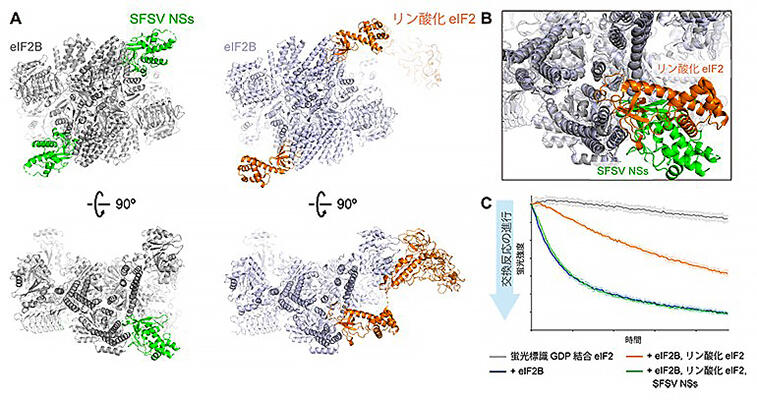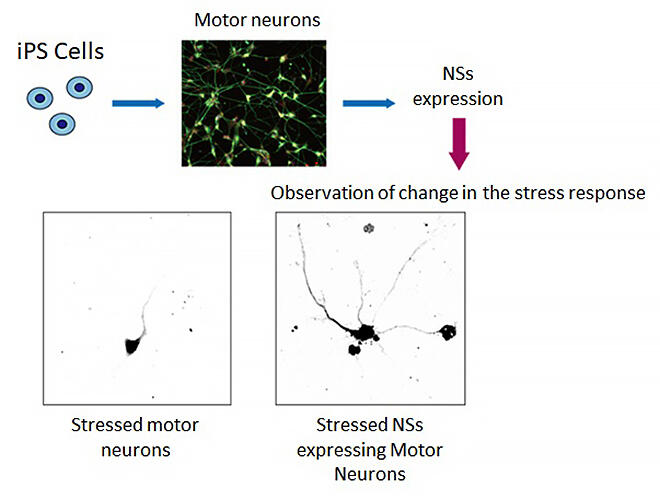The international collaborative research group of team Leader Takuhiro Ito and Researcher Kazuhiro Kashiwagi of the Laboratory for Translation Structural Biology at RIKEN Center for Biosystems Dynamics Research, Senior Researcher Shintaro Iwasaki and Research Fellow Yuichi Shichino of RNA Systems Biochemistry Laboratory at RIKEN Cluster for Pioneering Research, Associate Professor Yoshiho Ikeuchi and Assistant Professor Tatsuya Osaki of the Institute of Industrial Science at the University of Tokyo, and others successfully clarified the molecular mechanism through which the virus proliferates by suppressing the stress response of the host cell. They also demonstrated that this molecular mechanism could be applied to suppress the degeneration of nerve cells.

Provided by RIKEN
The research group identified the mechanism by which the "NSs protein" of sandfly fever Sicilian virus (SFSV) suppresses the stress response of host cells. The stress response of host cells is triggered by the binding of the phosphorylated translation initiation factor "eIF2" to another translation initiation factor "eIF2B" to inhibit its activity.
They found that the NSs protein of SFSV prevents the stress response of the host cell by binding to eIF2B and blocking the binding site between phosphorylated eIF2 and eIF2B. They also found that the NSs protein suppresses the response to a wide range of stresses, not limited to viral infections, and can alleviate the degeneration of stressed nerve cells.

Provided by RIKEN
Team Leader Ito commented, "Three research groups are working on the project
"Protein aggregation and translation: yin and yang of diseased neurons" in the research and development area of the Innovative Advanced Research and Development Support Project (AMED―CREST) Unit Type "Understanding proteostasis and discovering innovative medical applications." We plan to examine whether the NSs protein has the effect of preventing degeneration of nerve cells using neurodegenerative disease model mice in the future."
■ Sandfly fever Sicilian virus (SFSV) : A type of virus found in the Mediterranean region that causes pappataci fever, a disease with influenza-like symptoms. The transmission of the virus is mediated by hematophagous flies called sandflies.
■ NSs protein : Proteins encoded by the viral genome are broadly divided into structural proteins that make up the shell of the virus and nonstructural proteins that are used for proliferation of the virus. The NSs protein is one of the nonstructural proteins encoded by the genome of SFSV. It was named NSs because it is encoded by a region of the SFSV genome called the S segment.
■ Translation initiation factors eIF2 and eIF2B : Translation initiation factor is a collective term for proteins that work cooperatively with ribosomes, which synthesize (translate) proteins in cells, to initiate protein synthesis. Eukaryotic translation initiation factors are called eukaryotic initiation factors (eIFs). eIF2, one of the eIFs, is a G protein that can participate in translation upon GTP binding. eIF2B can convert eIF2 from its GDP-bound (inactive) to GTP-bound (active) form.
This article has been translated by JST with permission from The Science News Ltd.(https://sci-news.co.jp/). Unauthorized reproduction of the article and photographs is prohibited.




